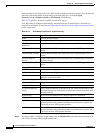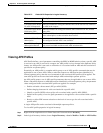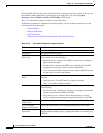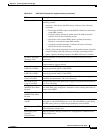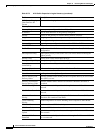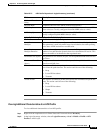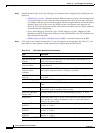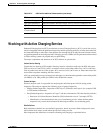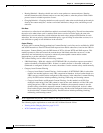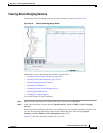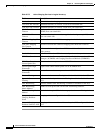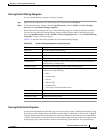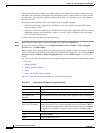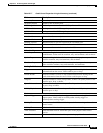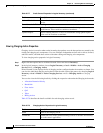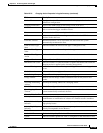
25-122
Cisco Prime Network 4.0 User Guide
OL-29343-01
Chapter 25 Monitoring Mobile Technologies
Working with Active Charging Service
• Routing Ruledefs—Routing ruledefs are used to route packets to content analyzers. Routing
ruledefs determine which content analyzer to route the packet to, when the protocol fields and/or
protocol states in ruledef expression are true.
• Charging Ruledefs—Charging ruledefs are used to specify what action to take based on the analysis
done by the content analyzers. Actions can include redirection, charge value, and billing record
emission.
Rule Base
A rule base is a collection of rule definitions and their associated billing policy. The rule base determines
the action to be taken when a rule is matched. Rule bases can also be used to apply the same rule
definitions for several subscribers, which eliminate the need to have unique rule definition for each
subscriber. We can set priority, default bandwidth policy, type of billing for subscriber sessions, for a
rule definition or group of rule definitions in the rule base.
Content Filtering
ACS also offers a content filtering mechanism. Content filtering is an in-line service available for 3GPP
and 3GPP2 networks to filter HTTP and WAP requests from mobile subscribers, based on the URLs in
the requests. Content filtering uses the DPI feature of ECS to discern HTTP and WAP requests. This
enables operators to filter and control the content that an individual subscriber can access, so that
subscribers are inadvertently not exposed to universally unacceptable content and/or content
inappropriate as per the subscribers’ preferences.
The content filtering service offers the following solutions:
• URL Blacklisting—With this solution, all HTTP/WAP URLs in subscriber requests are matched
against a database of blacklisted URLs. If there is a match, the flow is discarded, redirected, or
terminated as configured. If there is no match, subscribers view the content as they would normally.
• Category-based Content Filtering
–
Category-based Static Content Filtering—In this method, all HTTP/WAP URLs in subscriber
requests are matched against a static URL categorization database. Action is taken based on a
URL’s category, and the action configured for that category in the subscriber’s content filtering
policy. Possible actions include permitting, blocking, redirecting, and inserting content.
–
Category-based Static-and-Dynamic Content Filtering—In this method, each URL first
undergoes static rating. If the URL cannot be rated by the static database or if the URL static
rating categorizes a URL as either Dynamic or Unknown, the requested content is sent for
dynamic rating; wherein the requested content is analyzed and categorized. Action is taken
based on the category determined by dynamic rating, and the action configured for that category
in the subscriber’s content filtering policy. Possible actions include permitting, blocking,
redirecting, and inserting content.
Note ACS is applicable only for the ‘local’ context in the logical inventory.
The following topics explain how to work with ACS in Prime Network Vision:
• Viewing Active Charging Services, page 25-123
• ACS Commands, page 25-136



